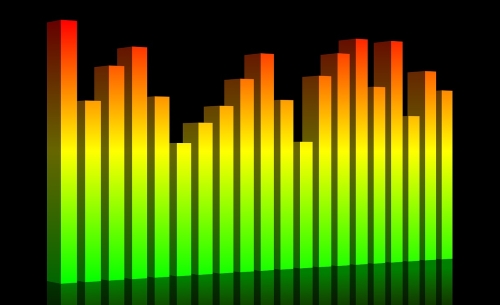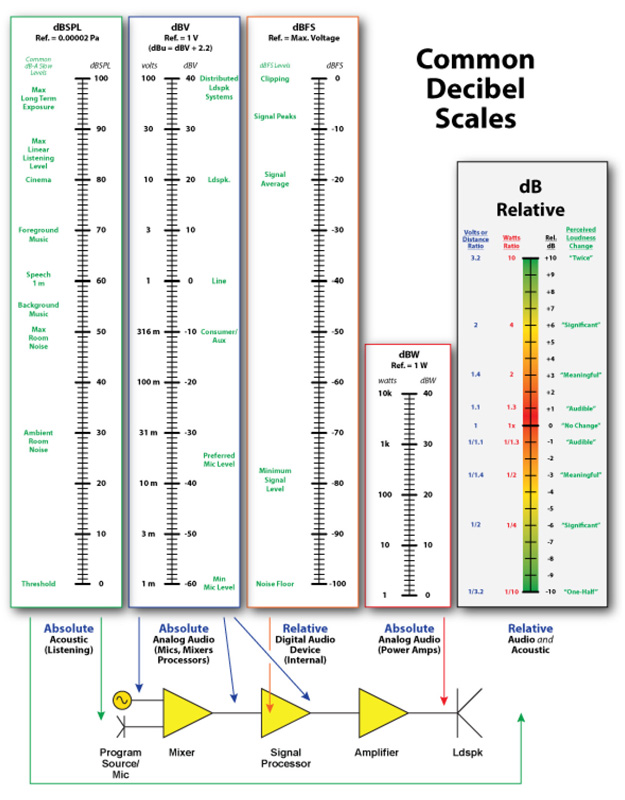Increasingly, SynAudCon has been doing audio training for industries outside of mainstream audio. These include fire alarm, security and IT. Practitioners in these fields are being dragged “kicking and screaming” into the professional audio world. The concept most difficult for them to grasp is the decibel.
Our task is to convey a working understanding of the dB in the shortest possible time span. In a one or two-day class, there is simply no time for an in-depth discussion of human hearing, log scales, RPN calculators and mathematical formulas, let alone the history lesson that ties the original development of the dB with how it is used in modern systems.
I cooked up a reference document to illustrate the relationship between linear units (voltage, power, pressure, distance) and decibels. I use this along with a short list of “talking points” as an introduction to the decibel.
1) The dB is used for describing the “difference” between two quantities in a way that relates to human hearing. Study the “dB Relative” box on the reference chart.
2) The dB can also be used to describe the difference between an audio or acoustic quantity and a reference quantity of the same unit. Study the “dB Absolute” boxes on the reference chart. The expression of a voltage, pressure or wattage using the dB is a “level.”
3) The range of meaningful values for voltage and pressure in an audio system extend over a range of about 100 dB. Study the dBSPL and dBV boxes on the reference chart.
4) The range of meaningful power amplifier sizes used in audio systems extend over a range of about 40 dB. Study the dBW box on the reference chart.
5) The dB is always a ratio. A ratio exists between any two audio or acoustic quantities of the same unit.
6) Your “comfort” with the dB will be directly related to how often you use it. Train your brain!
Examples to think about.
1) The output power of my amplifier is 100 W. The output level is +20 dBW (dBW box).
2) The signal from my mixer is 1 Vrms, 0 dBV or 2.2 dBu (dBV box).
3) Increasing the voltage by a factor of 3.2 increases the wattage by a factor of ten, which increases the perceived loudness by a factor of 2 (dB Relative box). This is true for any initial voltage value (1 mV, 1 V, 10 V, etc.) (dB Relative box).
4) Increasing the dBSPL into the microphone increases the output level of the mixer by 10 dB, the output level of the signal processor by 10 dB, the output level of the power amplifier by 10 dB, and the dBSPL from the loudspeaker by 10 dB (All boxes, left to right).
See the dB Reference Chart in pdf format: dBReferenceChartSAC.pdf

















